The Covid Diaries 77 – Churchill War Rooms, London
A review of Churchill’s war-time bunker near Downing Street, plus the vast underground Churchill Museum. In which I am surprised by how much there is to discover.
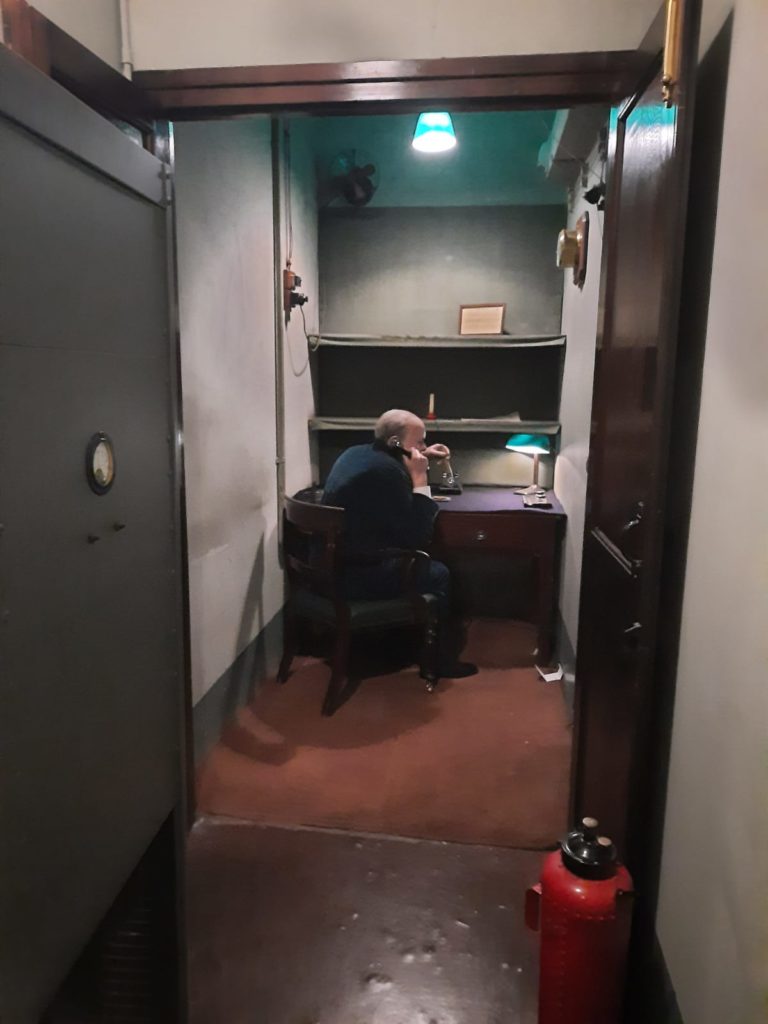
A Piece of British History
Post-lockdown, I have had a burst of booking tickets to things I have always meant to see, but never made time for. Recently, one of these outings was to the Churchill War Rooms. This is a branch of the Imperial War Museum, and conserves in situ the war rooms used by Prime Minister Winston Churchill and his cabinet during WWII. The basement of the New Government Offices was chosen pre-war for the building’s strong steel frame and proximity to Downing Street and Parliament, it was operational just before the outbreak of war. Churchill’s War Cabinet met here over 100 times, and the fact that everyone just left after the war and the site was not repurposed provided a wonderful opportunity to transform it into a museum in the 1980s.
In 2005, a Churchill Museum opened, examining Winston Churchill’s life and work. Despite being a museum enthusiast (to say the least), I had no idea this was down here. So it was a nice surprise. On the other hand, a large and very interactive museum made my trip last a lot longer than I had anticipated. Bear this in mind if you are planning a visit yourself!
So now join me as we look at the Churchill War Rooms first of all, followed by the Churchill Museum and a temporary exhibition of war artists.
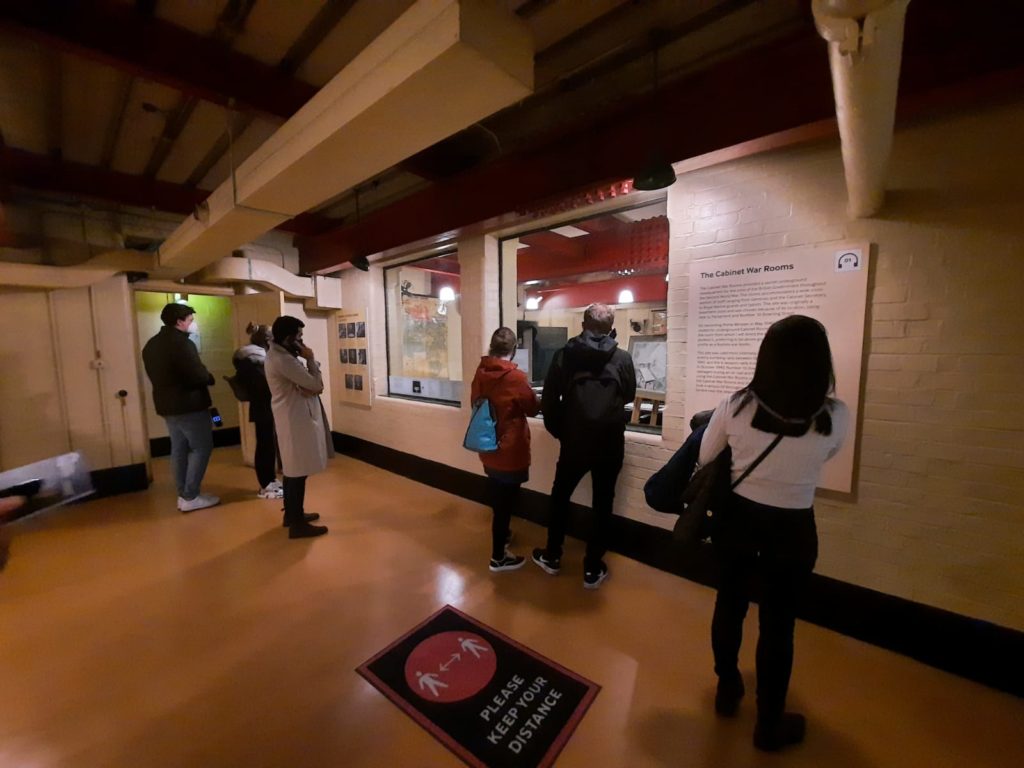
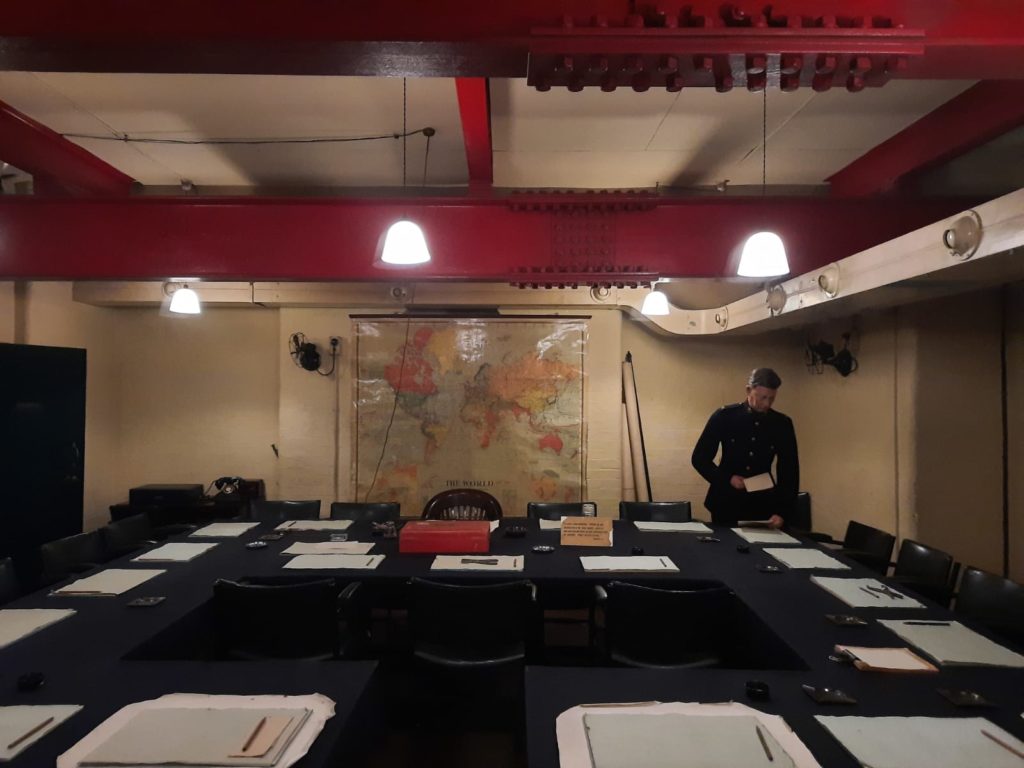
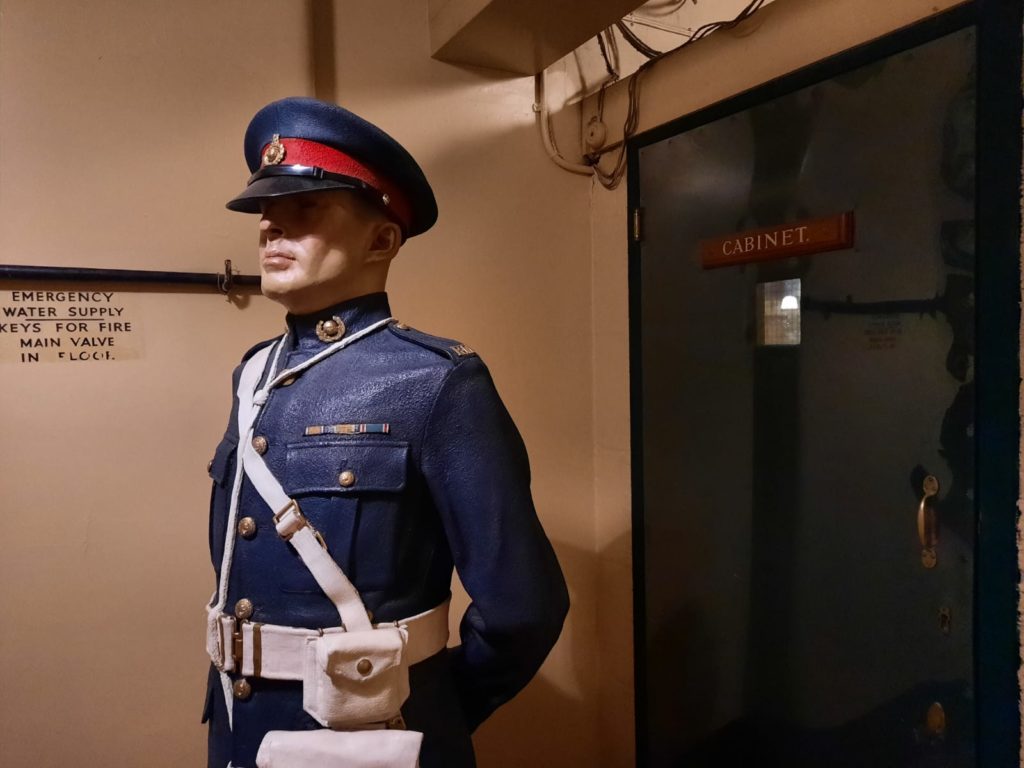
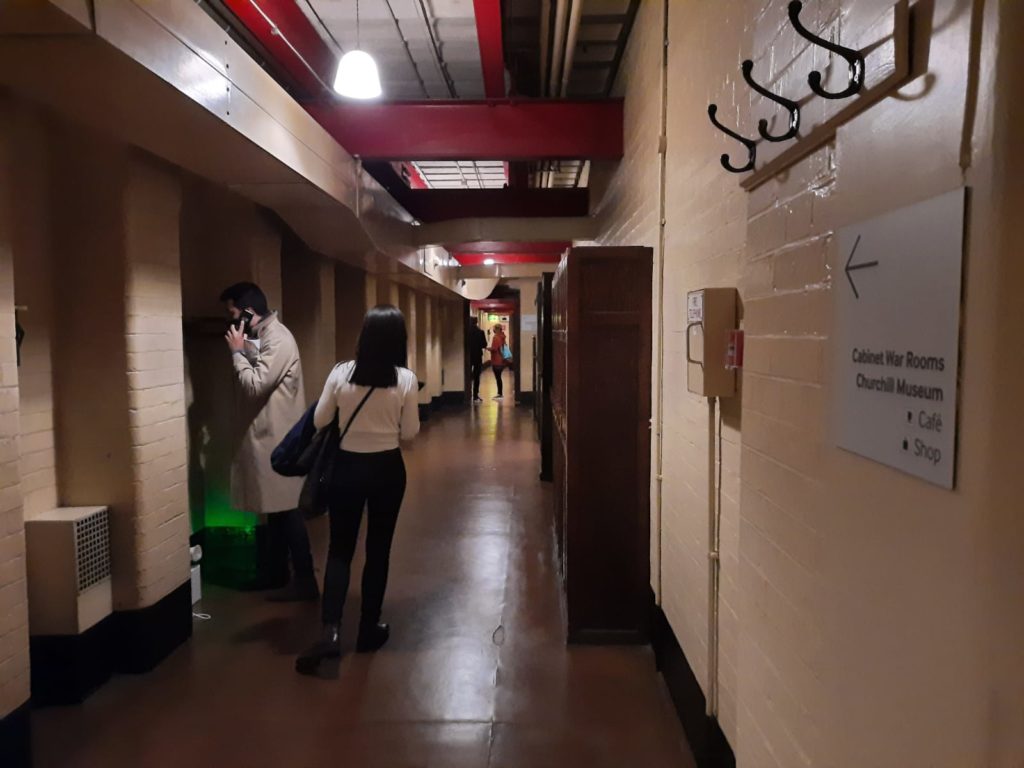
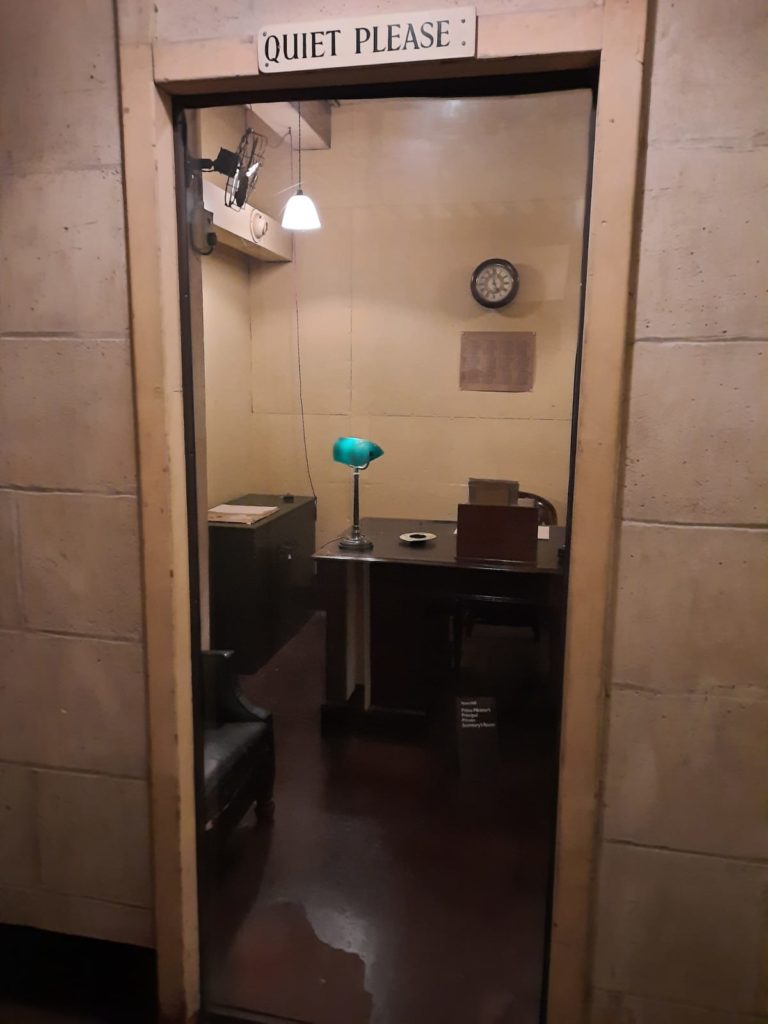
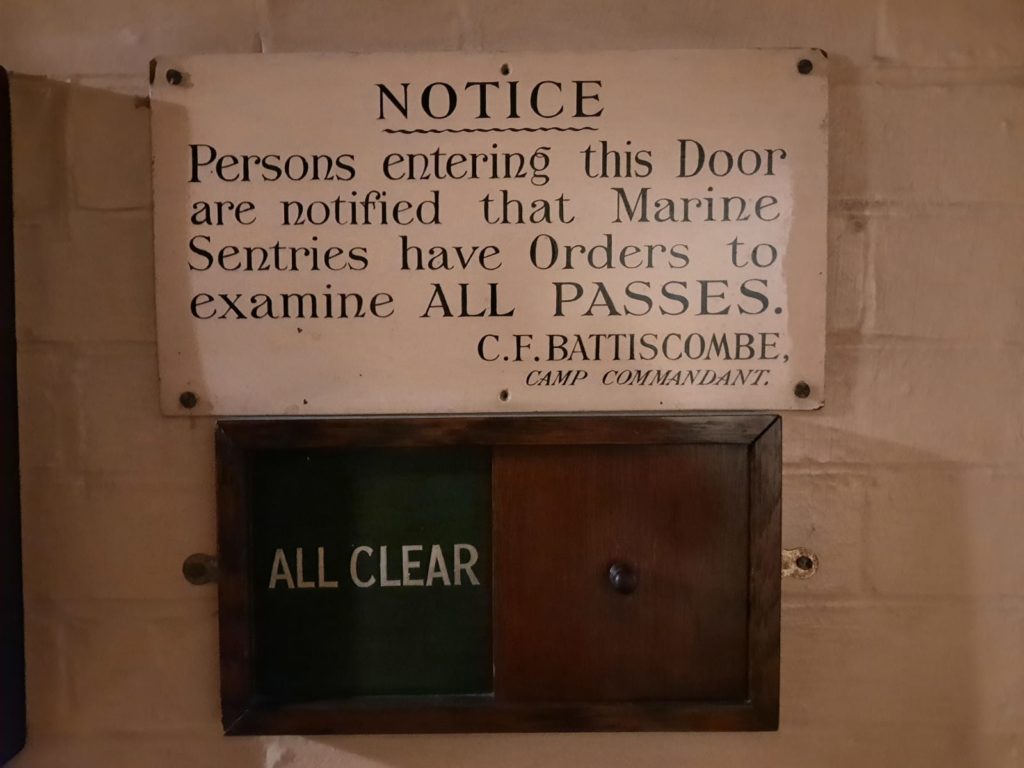
Churchill War Rooms – Bringing Authentic History To Life
When I say that everyone just left after the war, I really mean it. Down to leaving behind sugar cubes in a drawer. During the Thatcher era Michael Heseltine pitched a transformation of the space into a museum. The idea was that it would stop the rooms and remaining artefacts disintegrating any further thanks to proper museum conservation, and opening it to the public would ensure it paid its way. Mrs. Thatcher accepted this proposition (something they agreed on for once), and the Churchill War Rooms opened in 1984.
In order to create a museum and protect the objects, visitors look at the majority of the rooms through glass. There are also mannequins bringing the work of the War Cabinet and its staff to life. This risks making it seem a little bit dated (one of the few women mannequins is putting her lipstick on), but I quite liked it. A bunch of camp beds and maps would otherwise not be so lively.
Visitors receive a free audioguide as part of their ticket, which provides explanations and anecdotes. Currently because of the need for social distancing and a one way system, the instructions on the audioguide can point you in the wrong direction. But the space is small and simple enough that you can work it out nonetheless. Currently the Churchill Museum also pops up halfway through your visit before you see the rest of the War Rooms. But we will finish looking at the latter before we move on.
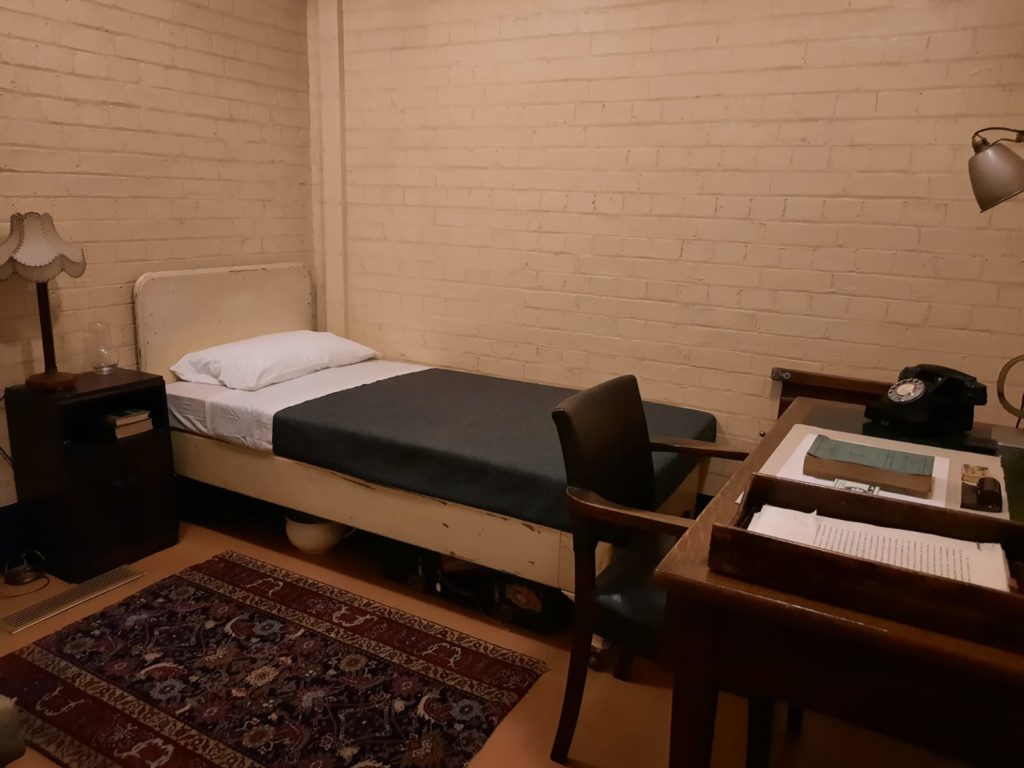
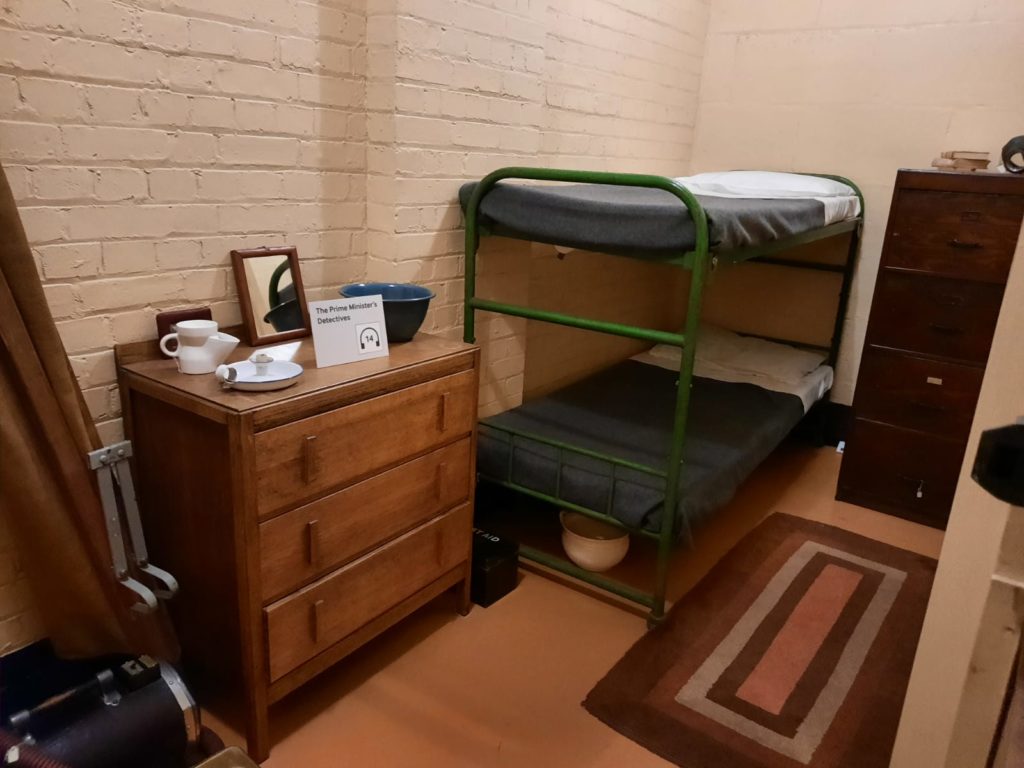
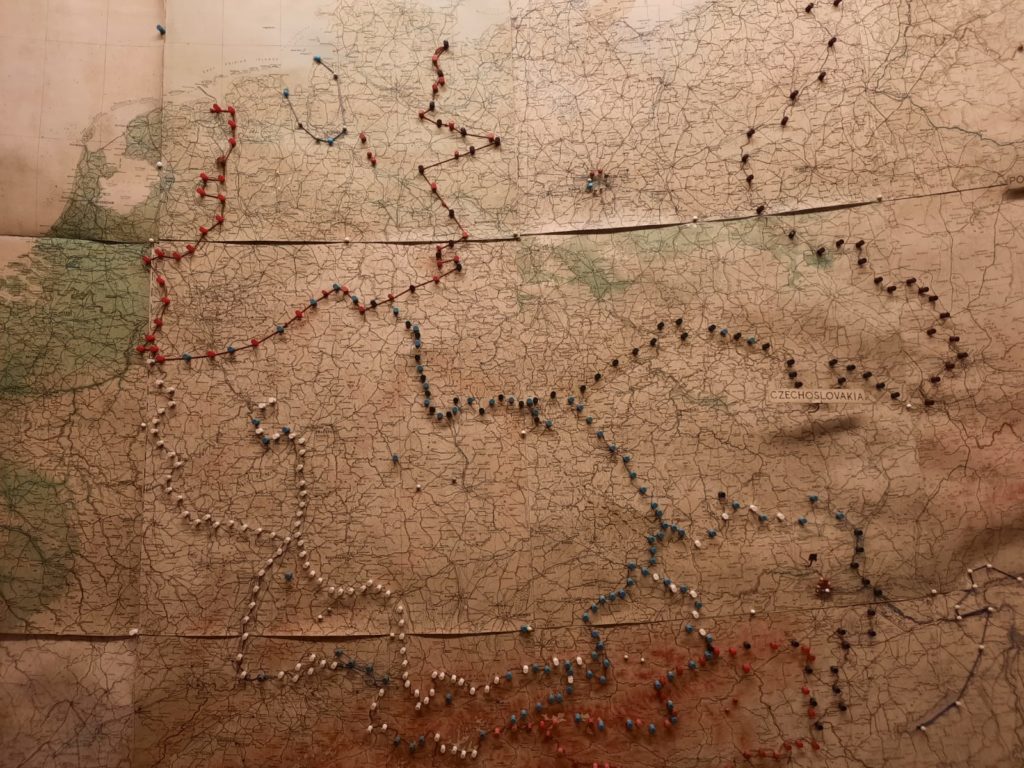
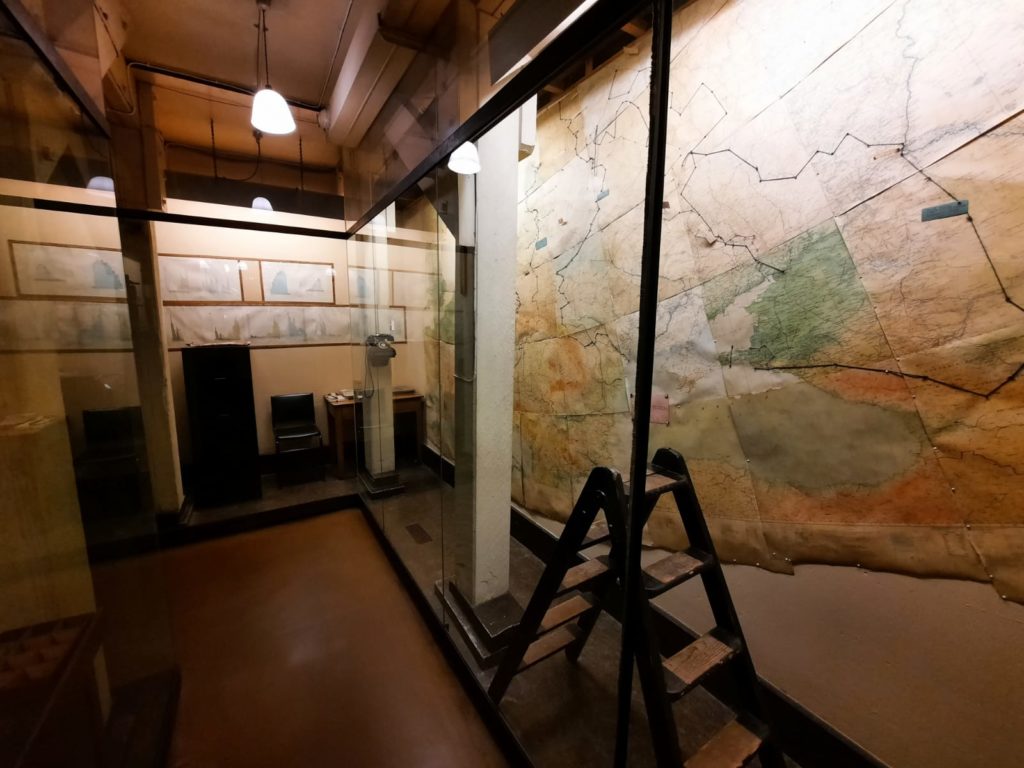
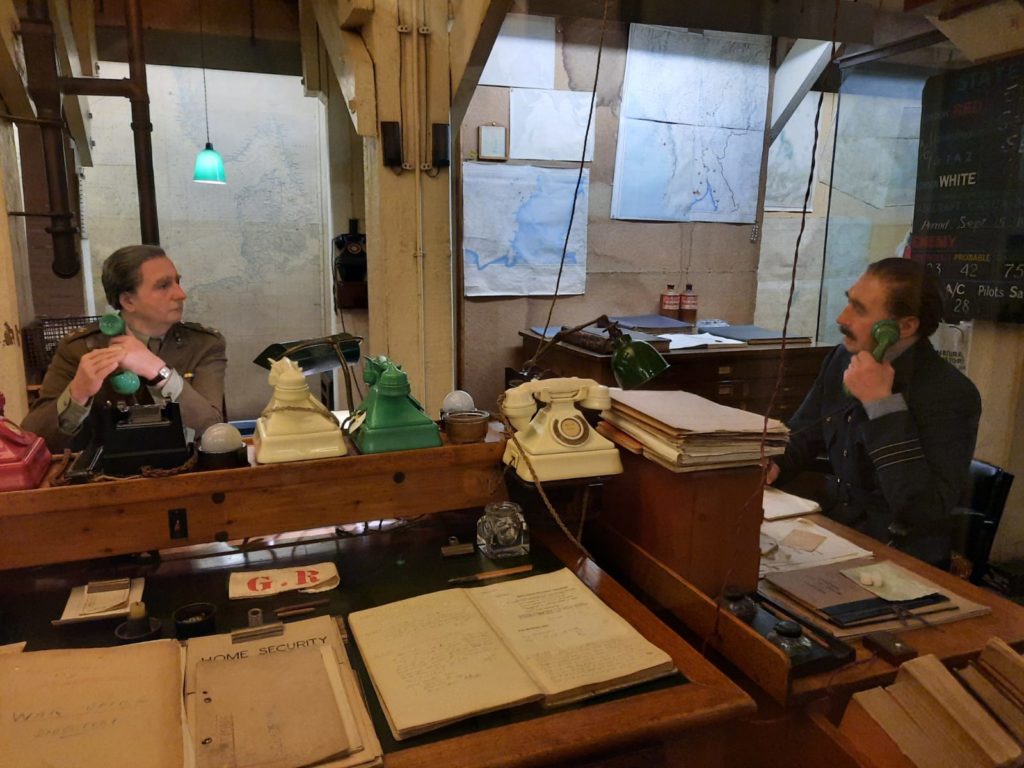
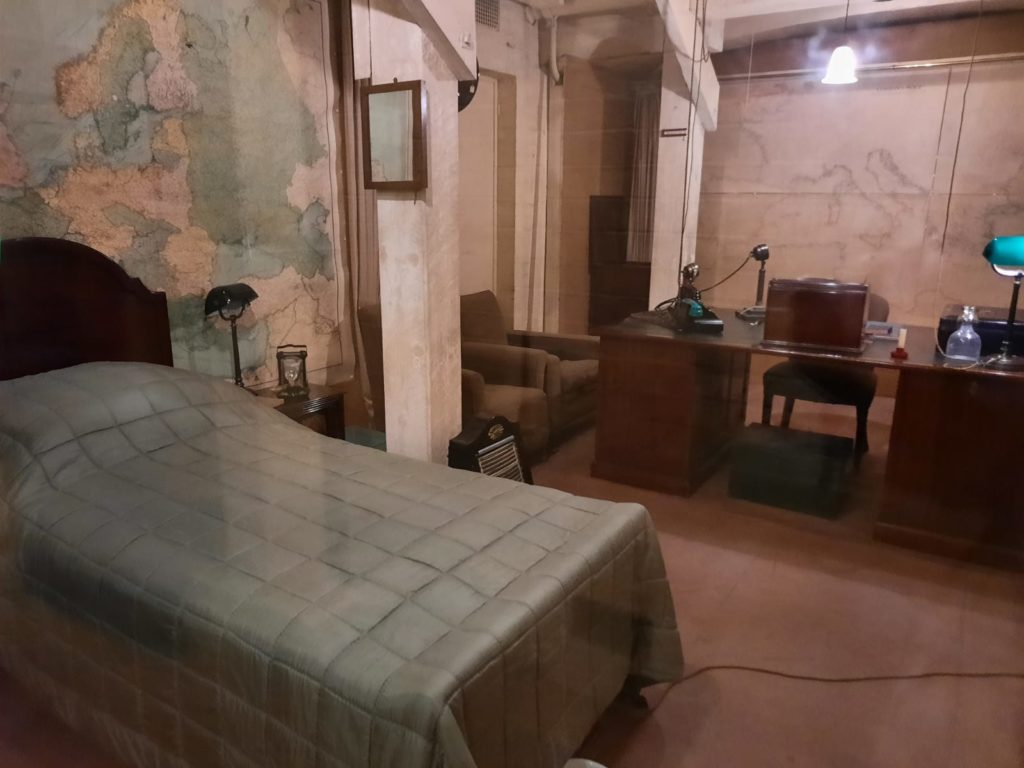
Churchill War Rooms – Sanctuary, But No Luxury
The faithful reconstruction of the War Rooms (along with the mannequins, I would argue), give a sense of what it must have been like living and working down there. It’s first of all a bit bleak, and of course militaristic. It’s fascinating now to look at all the remnants of procedures in the form of signs etc. Show your ID here. If there’s a gas attack, turn this lever. There’s no daylight obviously, but a board showing what the weather is like outside. The real world must have seemed a long way away.
A lot of people slept down here. Including two detectives (Churchill’s only security detail) sleeping in bunk beds. The bedrooms are basic but must have been so much better than spending long nights in bomb shelters. Everyone had a chamber pot – the audio guide makes the point that Churchill would have been used to this, having grown up in aristocratic stately homes like Blenheim Palace.
All in all I really enjoyed my experience of the War Rooms. The Second World War continues to loom large in British history (particularly, I feel, during the slightly jingoistic Brexit and post-Brexit period), so this place has a real aura. There are very human moments, like a doodle of Hitler on a map. And a lot of interesting detail on the audio guide. Even without the whole second act of the museum, it’s worth visiting for this alone (expensive though, £25+ for a ticket).
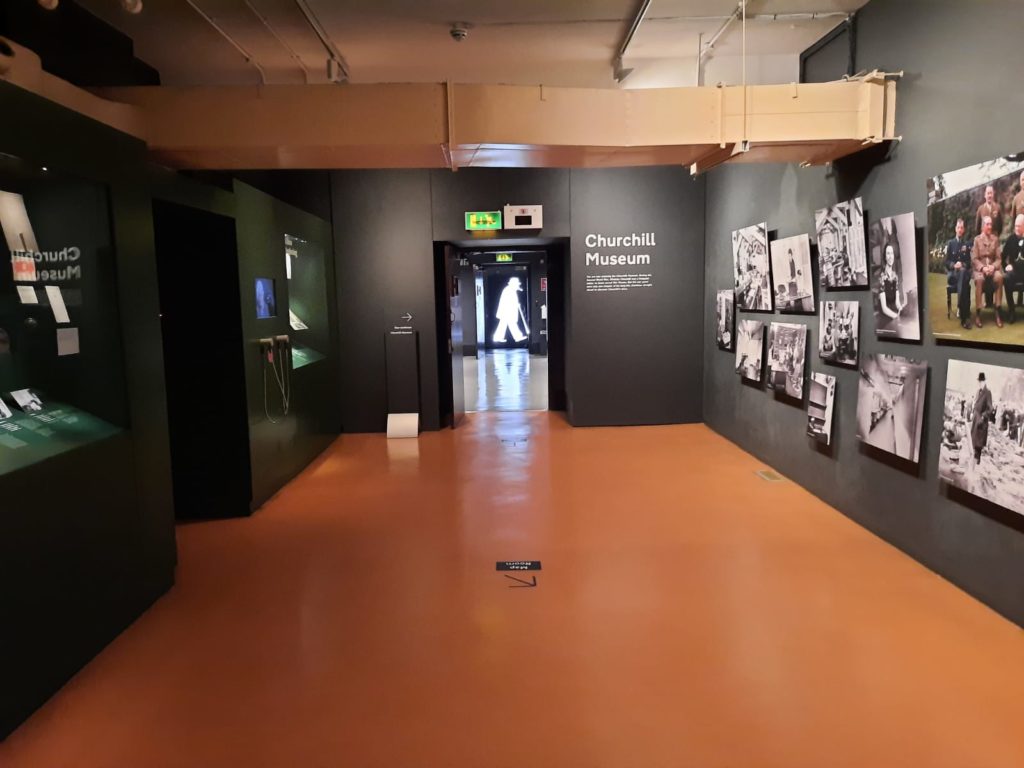
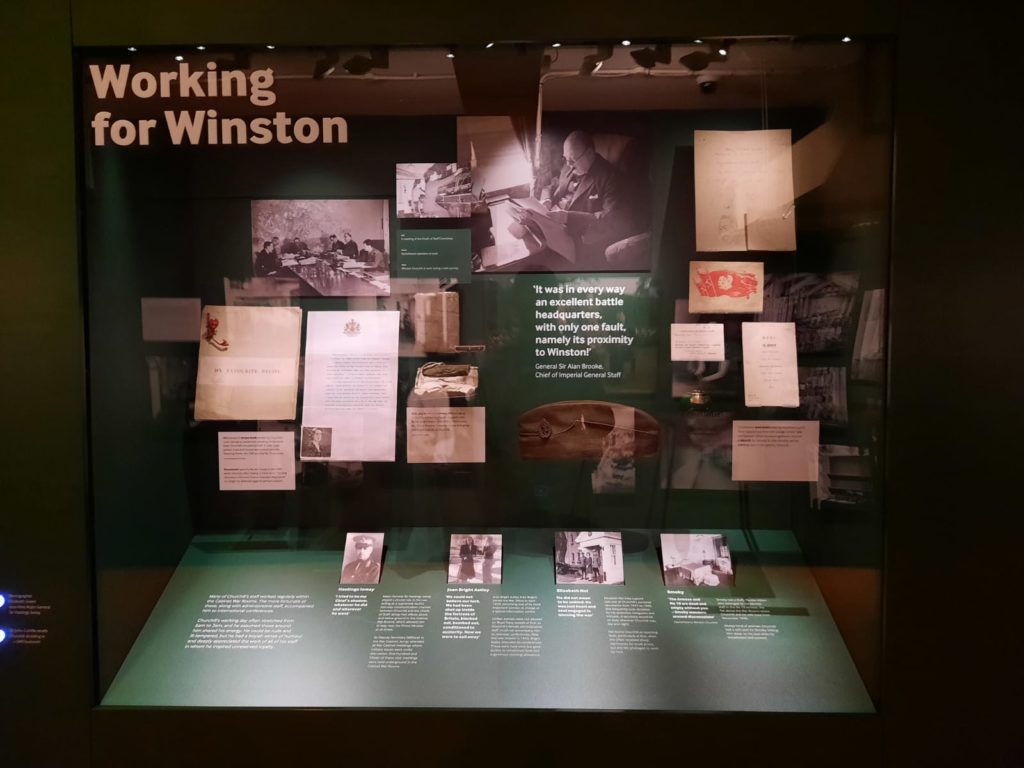
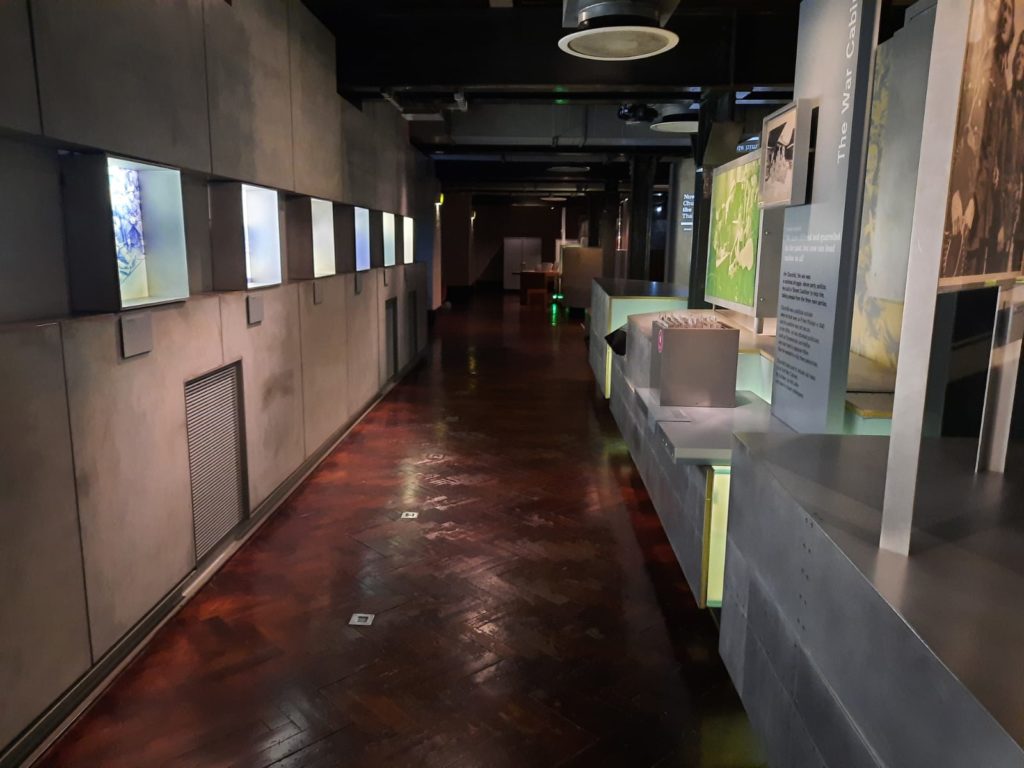
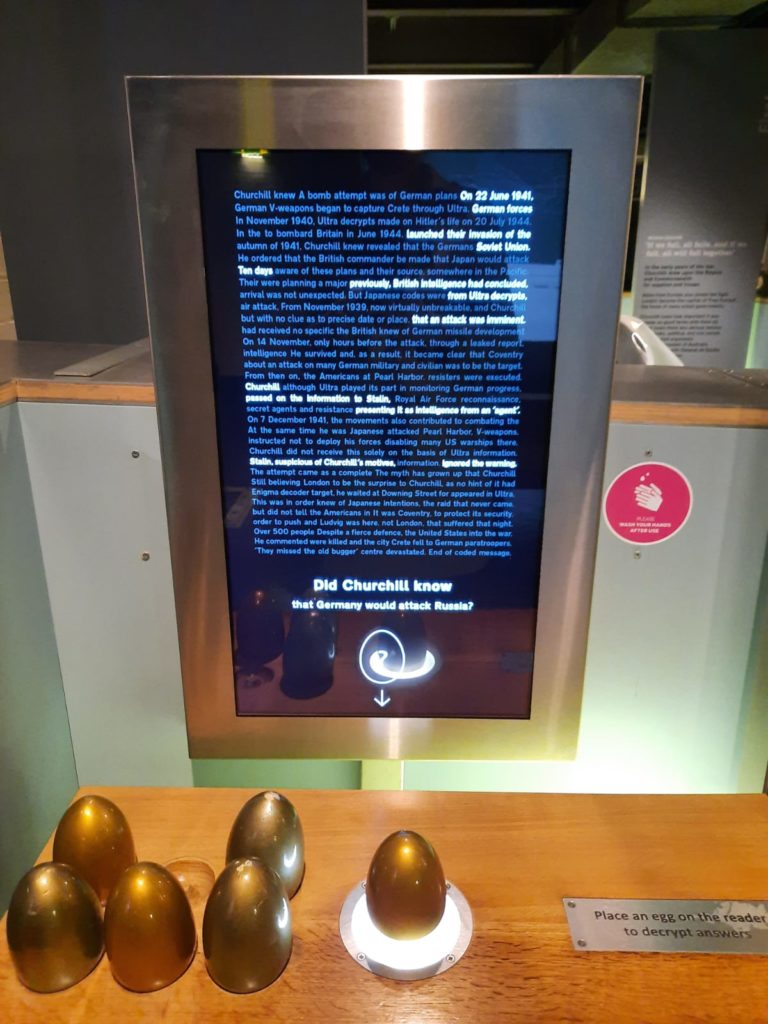
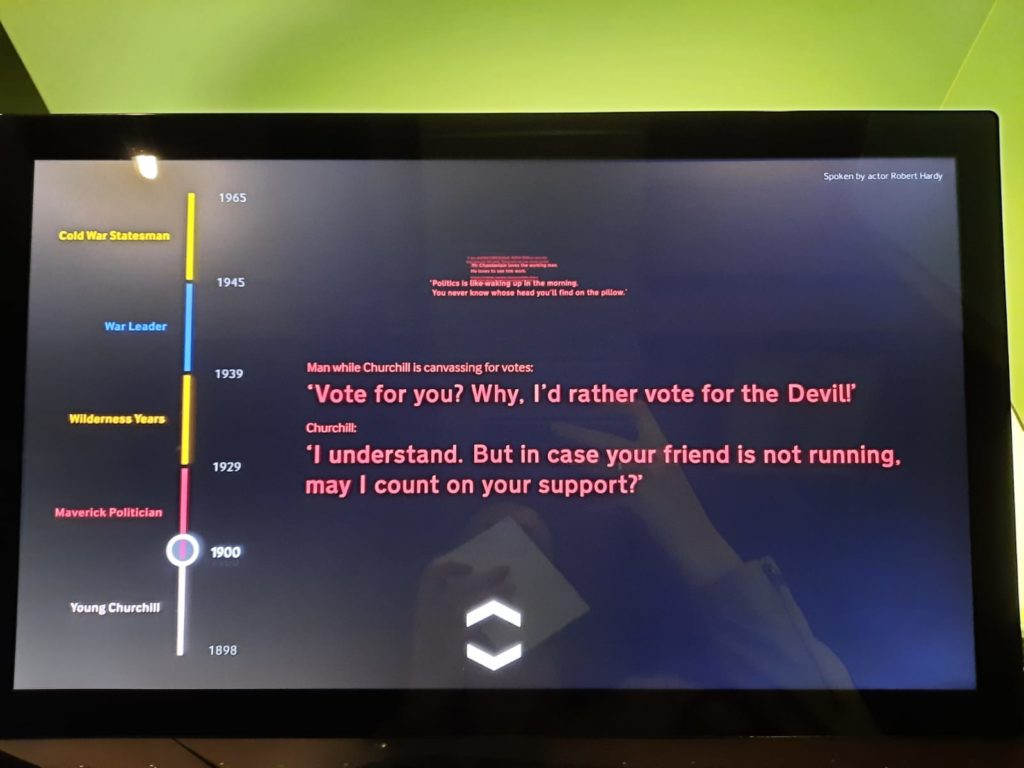
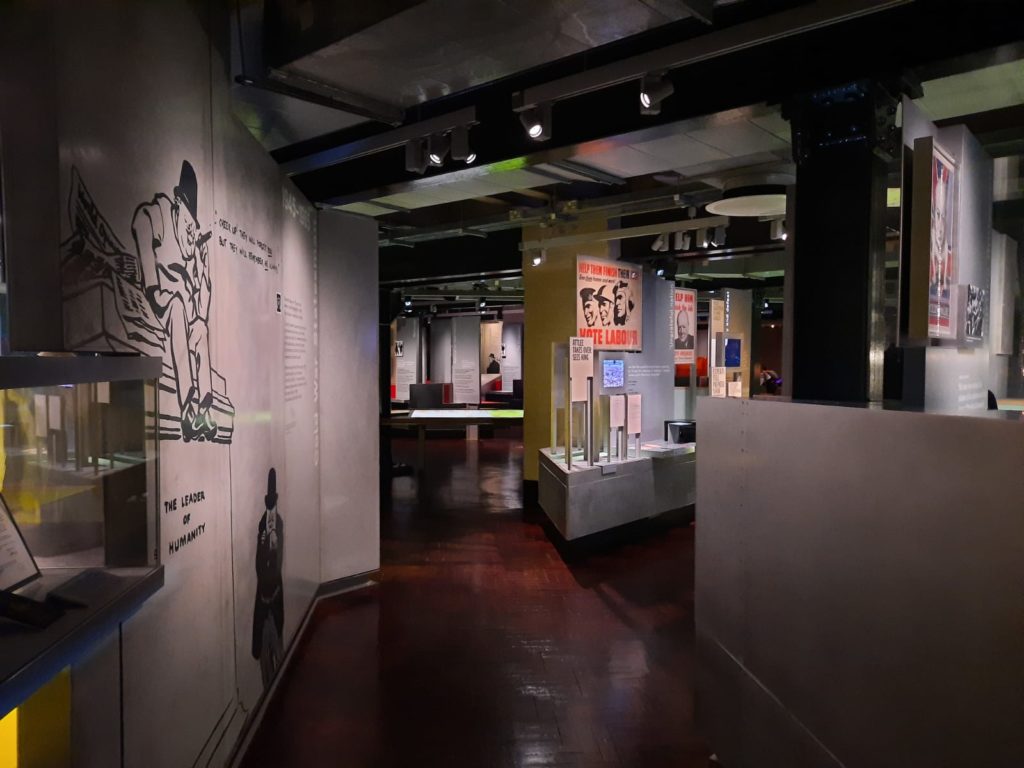
Churchill Museum – Where Did They Find All This Space?
What a surprise the Churchill Museum is! You’ve explored quite a lot of the War Rooms, and then come across a one-room display with stories from the people who worked here (top 2 images above). I thought that was the museum at first. But no, you head through the entrance into the museum proper, and a vast open plan space extends before you.
The Churchill Museum, as the name suggests, focuses in on the life, personality and achievements of Winston Churchill. It’s thematic rather than strictly chronological, but I was still a bit surprised to come across a section on his childhood right over in the far corner from the entrance. Maybe this is to do with Covid measures and re-routing? The museum covers a huge amount of ground – the outline of Churchill’s life, his wit and views, his political allegiances, his stints as Prime Minister, his art.
As you will recall from the intro, the Churchill Museum only opened in 2005, so is still very modern. There is a huge amount of interactive material down here, and like the Florence Nightingale Museum, they have chosen to let you continue to use these exhibits as long as you are sanitising yourself afterwards. They could do with providing a bit more sanitiser though. One of the main attractions is a massive display in table format which runs most of the length of the museum. You can use touch panels at the sides to scroll through Churchill’s life and discover personal and public events. Some of the dates trigger impressive sound or visual effects across the entire display (the dropping of the bomb on Hiroshima, for example). It’s a great way to bring basic historic information to life.
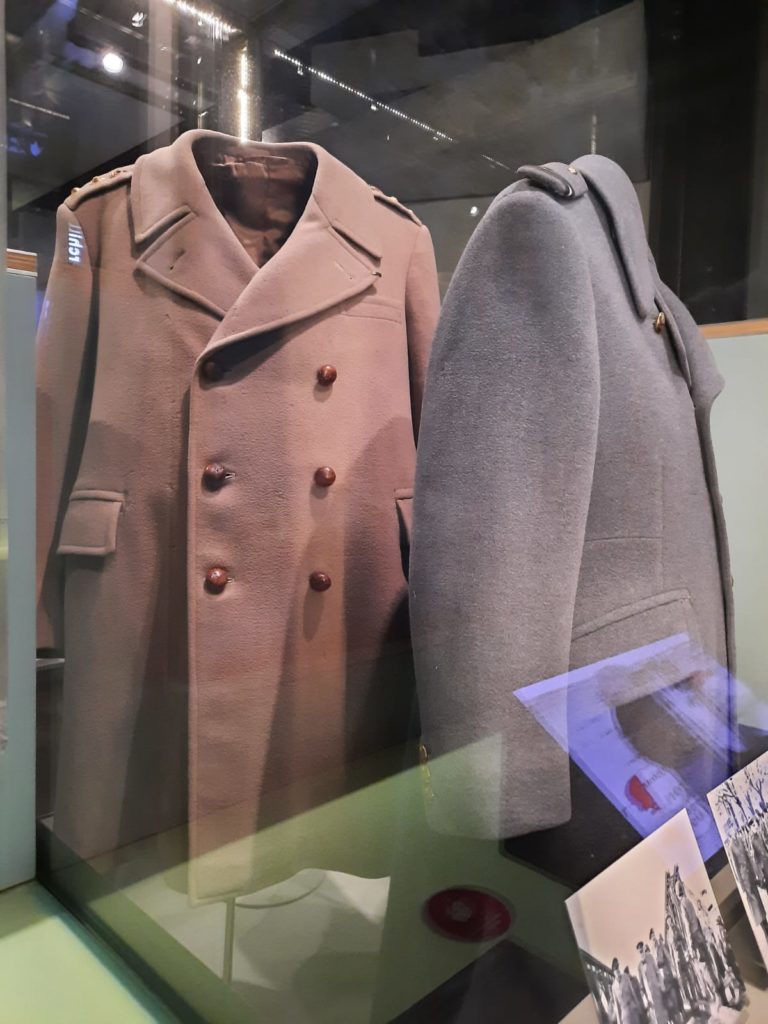
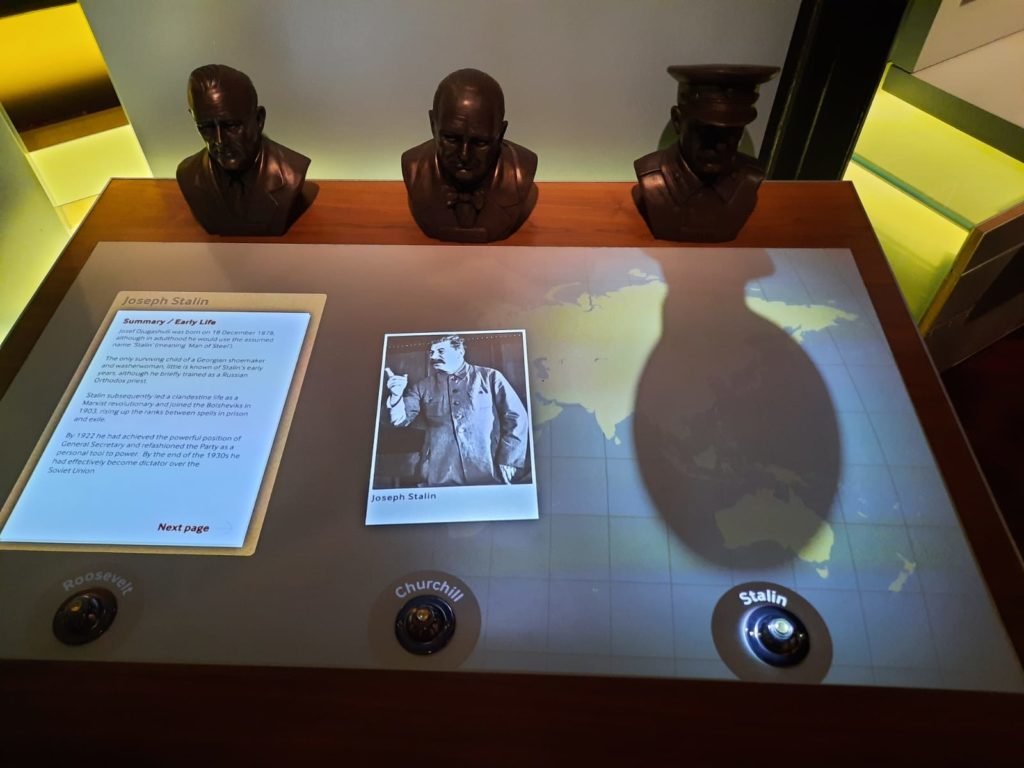
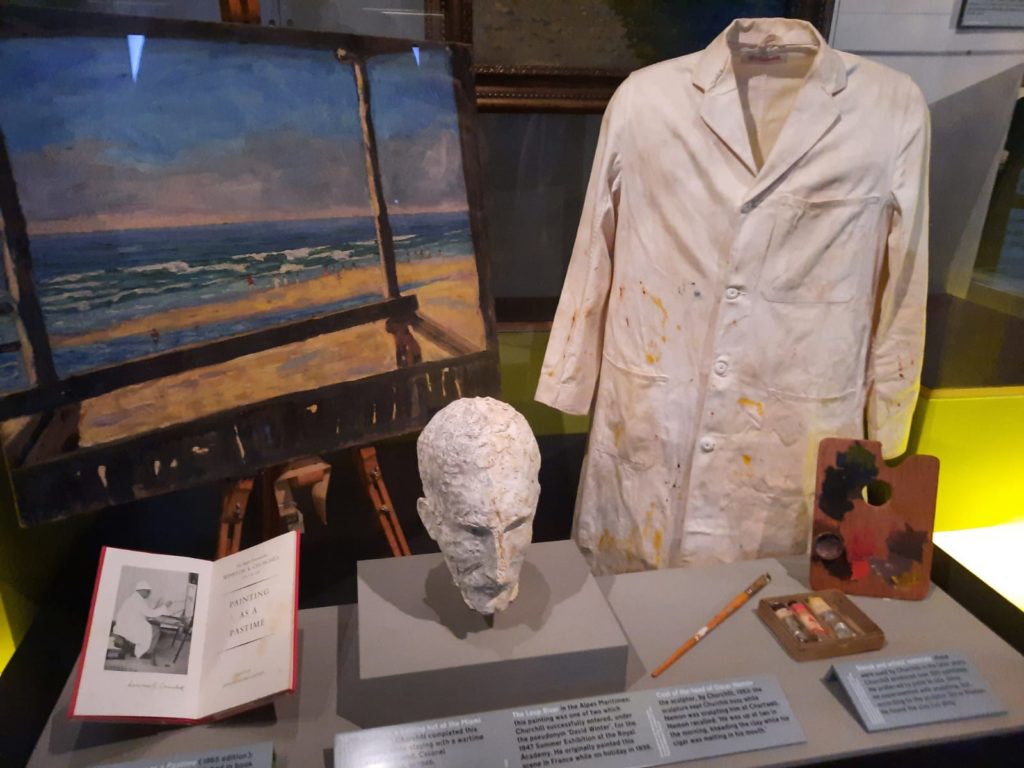
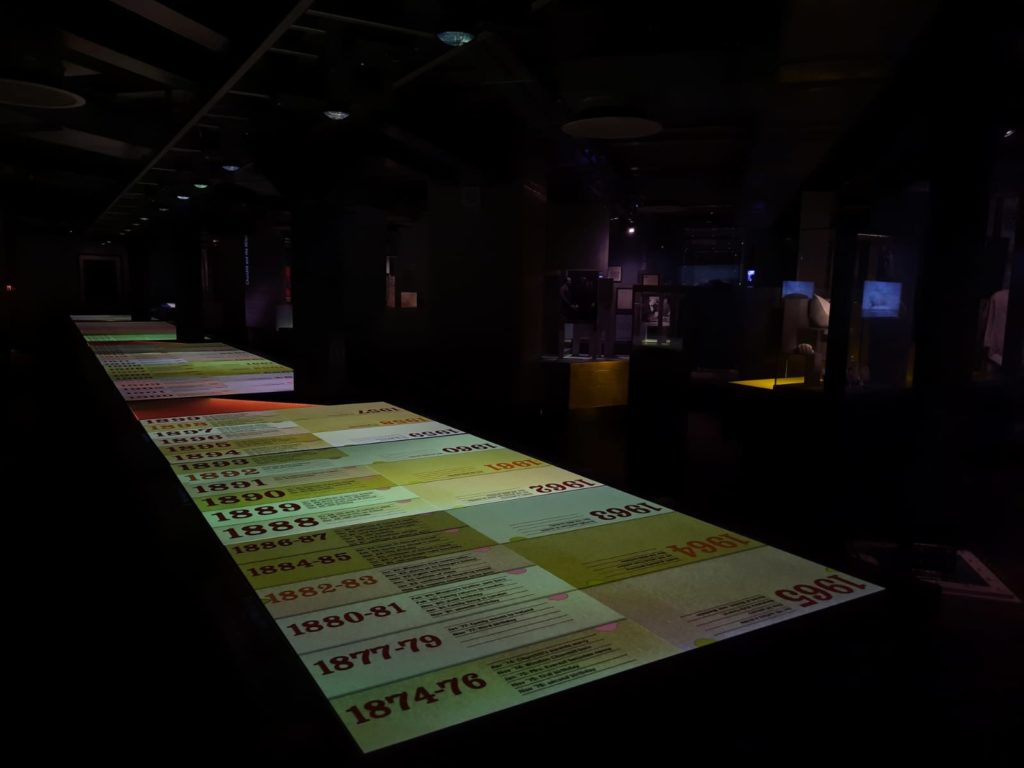

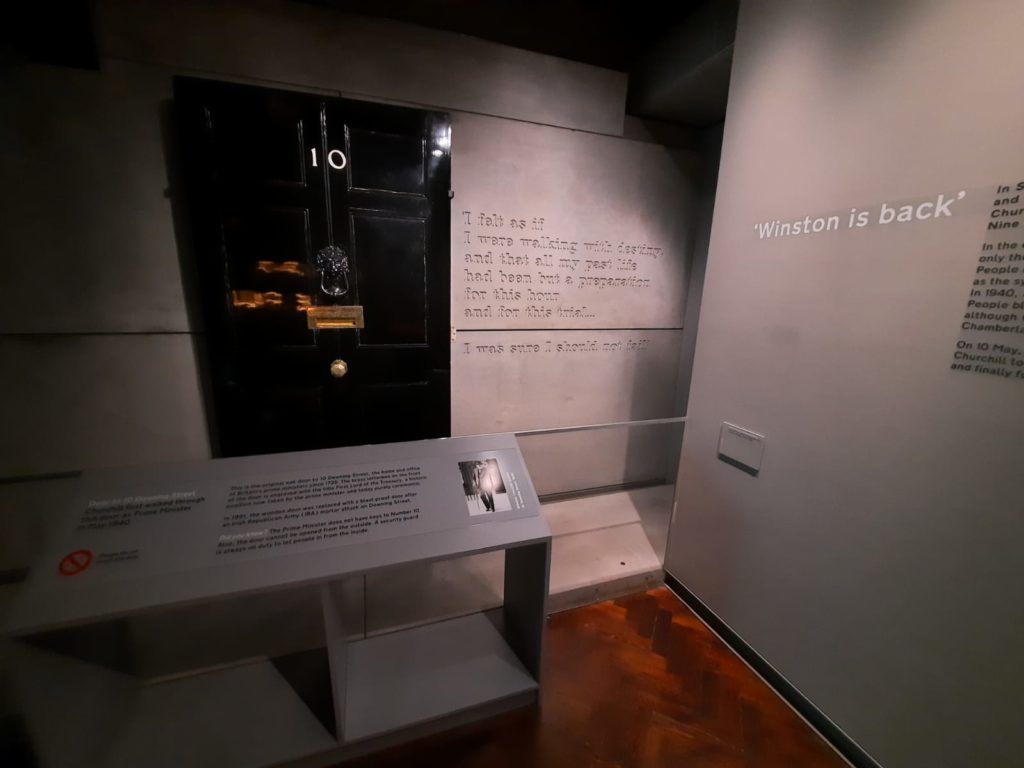
The Churchill Museum – A Nuanced Approach
Something that struck me as I flitted about the museum like a moth to an interactive display was the way in which the Churchill Museum, despite being a museum dedicated to such an important figure in British history, doesn’t ask us to revere him. Within a few of the themed areas there are interactives which pose challenging questions, such as “Did Churchill’s views on India make him a racist?” Evidence is presented by a historian, and we are asked to make up our own minds. It basically teaches the historic method of interpreting primary sources. It also shows us that there are reasons why people think yes, reasons why they think no, and the truth is not so simple as black and white.
It’s not just on these confronting questions that the Museum paints a nuanced picture of Churchill. We learn that his politics were malleable depending on what was expedient. And that he had a reputation as being difficult to work for/with. The nuance works in both directions, however. We also get a timeline selection of Churchill’s witticisms (example in the previous set of images above). And learn that he lost his pet budgerigar named Toby on a trip to the South of France. These stories added so much to my image of Churchill as the ‘bulldog’ of WWII.
The Churchill Museum for me was a surprise and a bonus. I did not expect a museum at all, let alone something so large, modern and open in its outlook. It did stretch a trip of an hour or so into something much longer – be advised if you’re going to visit that you could spend hours down there.
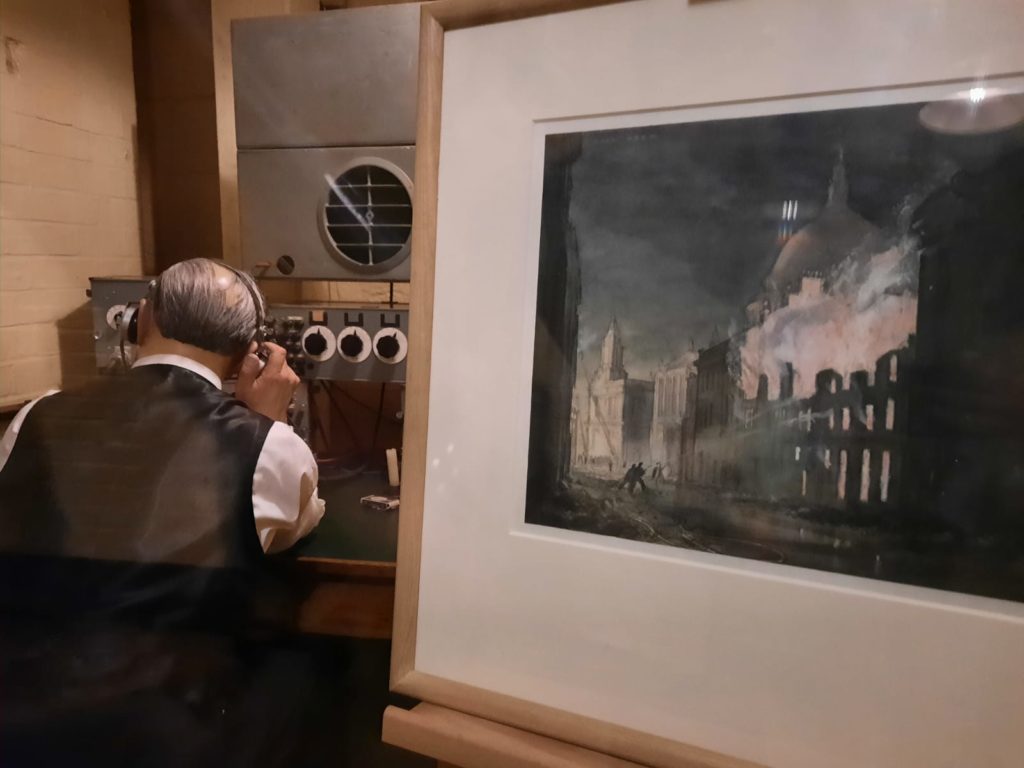
Wartime London: Art of the Blitz
As well as the main event of the War Rooms, and the bonus of the Churchill Museum, there is also a temporary exhibition currently on display. This is Wartime London: Art of the Blitz. The Blitz was of course the nighttime German bombing campaign against London. It terrorized (and killed) civilians, and destroyed huge swathes of the city. The government at this time had an official war artist scheme, and so the terror, damage and resilience were captured by some of Britain’s best artists.
The Imperial War Museum has huge art holdings, so just a small selection is on display here. Mostly pictures are set up within existing displays, as you see in the image above. To be honest, I didn’t think the War Rooms needed this additional layer. Perhaps it’s just that I have seen some great selections of war art in the past (including works by Henry Moore in some of Yorkshire’s top museums). Or maybe it’s that I had information overload after the Churchill Museum. But juggling looking at the recreated War Room spaces with appreciating the art didn’t quite work for me. Perhaps on a second viewing, if I was more aware of what to expect, I would take more in. There are some big names in mid-century British art here, in any case.
On its own merits: Churchill War Rooms: 4/5
On its own merits: Churchill Museum: 4.5/5
Wartime London: Art of the Blitz: 2.5/5
Implementing Covid measures: 3.5/5
Wartime London: Art of the Blitz on until 12 September 2021
Discover more of London’s hidden treasures. Sign up now for the Salterton Arts Review weekly newsletter:
If you see this after your page is loaded completely, leafletJS files are missing.

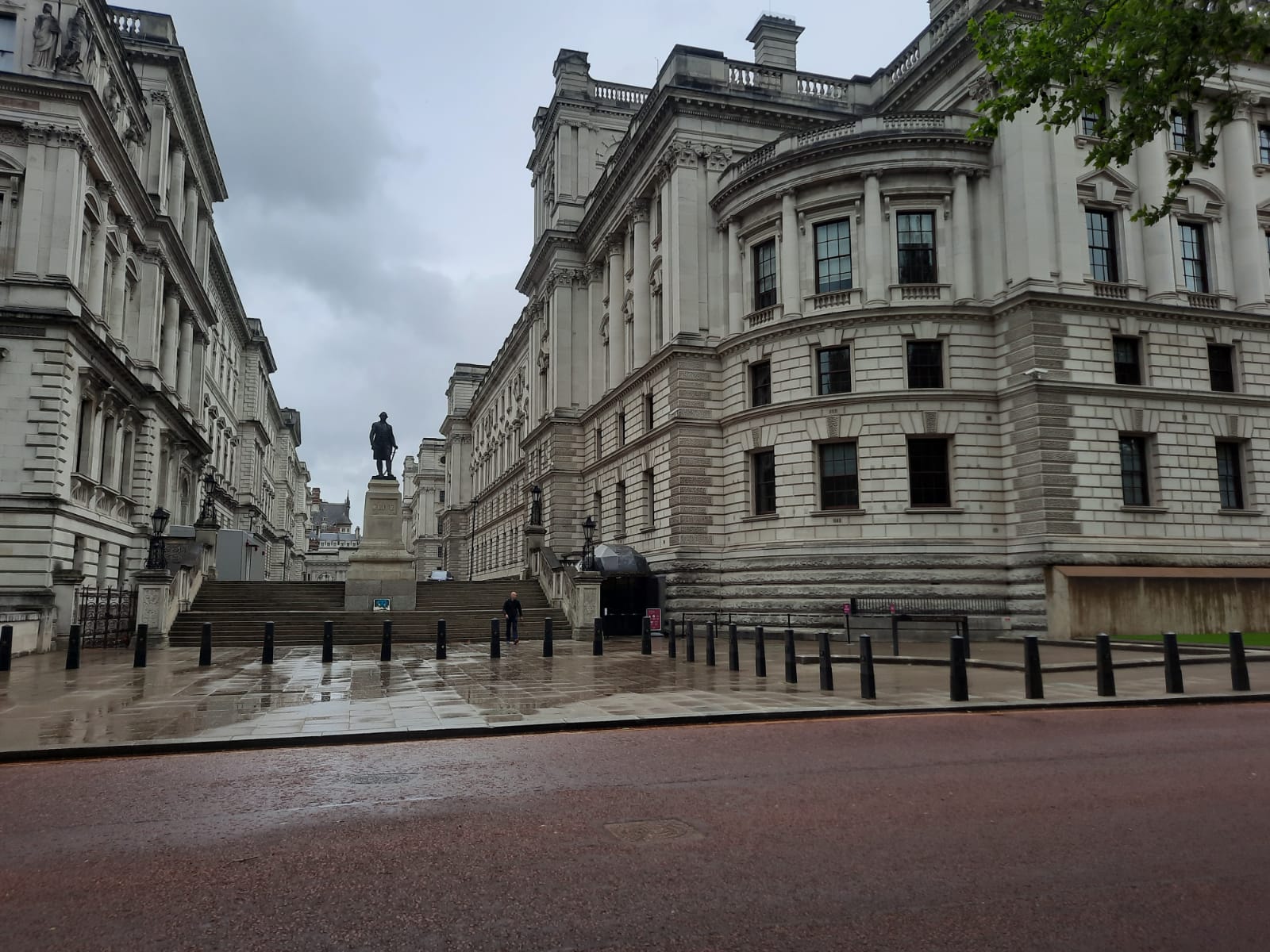
2 thoughts on “The Covid Diaries 77 – Churchill War Rooms, London”